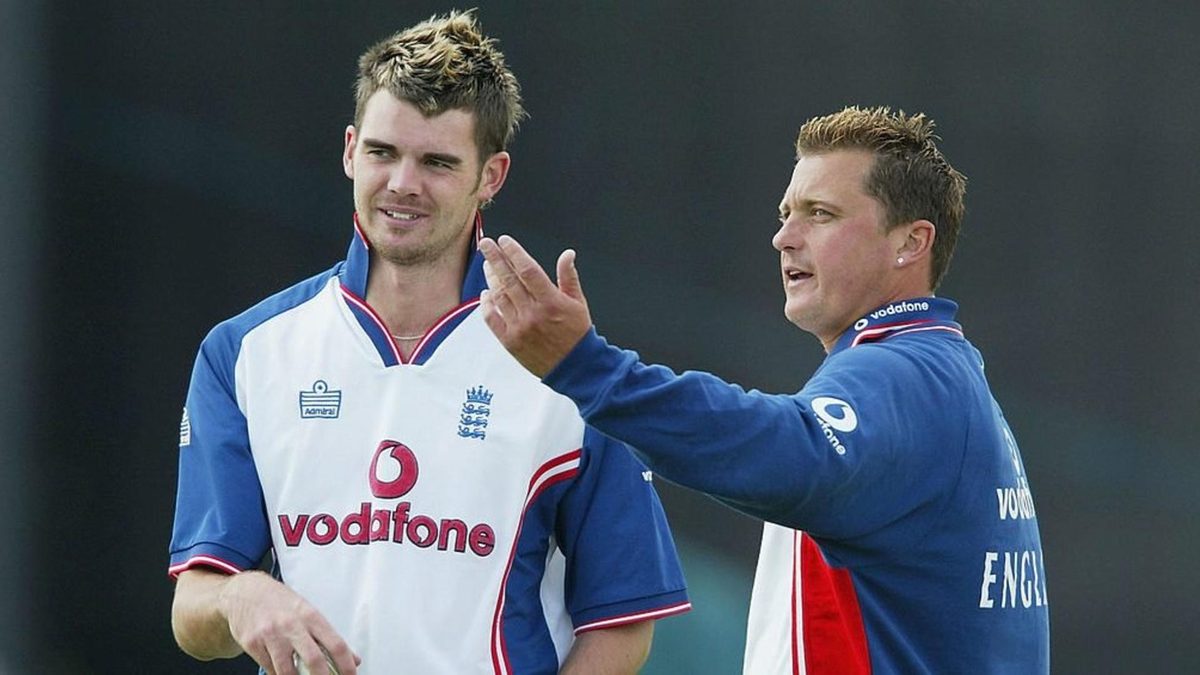
On the latest Wisden Cricket Weekly Podcast, host Yas Rana was joined by Wisden Cricket Monthly magazine editor and editor-in-chief Jo Harman and Phil Walker to pick Wisden’s England Test and ODI teams of the 2000s, as part of the 2000s in Review series.
The first two seamers in England’s Test team of the 2000s, Stephen Harmison and Matthew Hoggard, were easy picks, but there was keen discussion over which of England’s opening pair in the early part of the decade, Darren Gough and Andrew Caddick, should make the cut. While the latter won out, Phil put forward a strong case for the former.
“I went with Gough, rather than Anderson or Caddick,” Phil said. “The stats bear it out. He had a lower average in this period of time, from not too many fewer games than Caddick played. But it was more that Gough did it in conditions where Caddick didn’t. Gough was very effective in that famous, sort of generational winter that had those Pakistan and Sri Lanka wins. And Gough took an eight-for in Kandy, he took wickets against Pakistan, he was the spearhead of that side under Nasser.
“Although Caddick was really lethal in that West Indies series, it was Gough who drove that particular Test match. So for me, Gough just edges out Caddick for the reliability factor, and looking at this side, we’re both going with Harmison and Hoggard. For me, Gough is just going to deliver day after day and he offers something a little bit different to Harmison and Hoggard. Caddick can slip in there and do a Hoggard-like role, whereas Gough can change the direction of the game more regularly than Caddick.”
Jo and Phil were less tempted by James Anderson, who would go onto become England’s leading Test wicket taker, but had an up-and-down start to his career, despite a five-wicket haul on Test debut in 2003.
“It’s interesting that neither of us has gone with Anderson,” said Phil. “Anderson made his international debut in 2002/03, having played for Burnley that summer and suddenly he becomes the opening bowler for the one-day side in the World Cup, aged 20-odd. For the three years after that, though, he had a rough time.
“He obviously didn’t feature in the ’05 Ashes, went to South Africa the winter before that and was all over the show, took 2-160 or something like that in Johannesburg and he couldn’t land it anywhere. He was bowling long hops and full tosses every other over and it was only when Caddick and Gough had completely moved on and Harmison and Hoggard were shifted along the line as well that Anderson and Broad became the two legends. But Anderson matured quite late in the day, was averaging 35 in Test cricket across this decade, despite making his debut six years before the end of it.”
“And 46 away from home as well in this decade,” said Jo. “It’s obviously the thing that gets thrown at Anderson, particularly among Indian and Australian fans that he doesn’t do well away from home, which is not true in the latter part of his career at all. But certainly in that decade, it was true.”
Another name to crop up was Simon Jones, the hero of the ’05 Ashes, but a player who only played 18 Tests due to a succession of injures.
“I feel like we regularly lament the injury-curtailed career of Simon Jones on this pod. Gough only played 24 Tests in this decade, compared to Jones, so it’s not a huge difference,” said Jo. “But Gough had that body of work from the ‘90s that emphatically tells us he was a world-class bowler over a period of time.
“Simon Jones was good but we don’t know he would have maintained it. He never had an exceptional first-class record, it was always a punt to go with him because of his pace and he showed how good he was. But it’s not enough of a career for us to say that this is what he would be in our bowling attack of the decade.”
“I agree, and while that summer was astounding, I think he debuted in ’02 against India as a young bowler, and he didn’t put up many in that truncated part of his career,” Phil said. “I’m comfortable leaving Jones out.”
While neither Jo or Phil came close to including him, Yas felt that Ryan Sidebottom, who had a better average of any England bowler with more than 50 Test wickets other than Gough in this period, was worth a mention.








